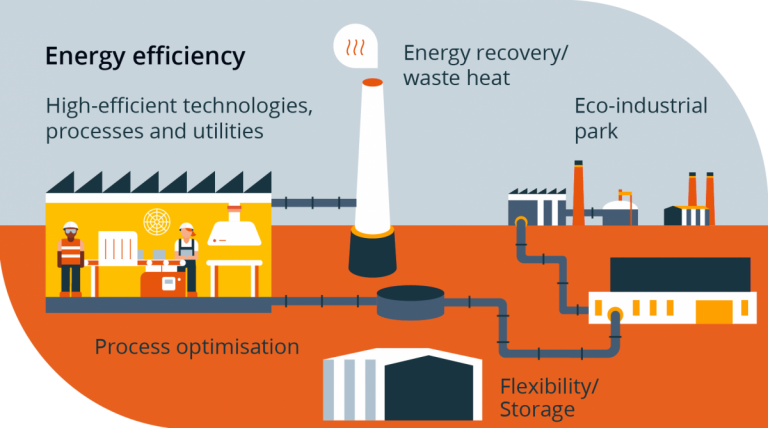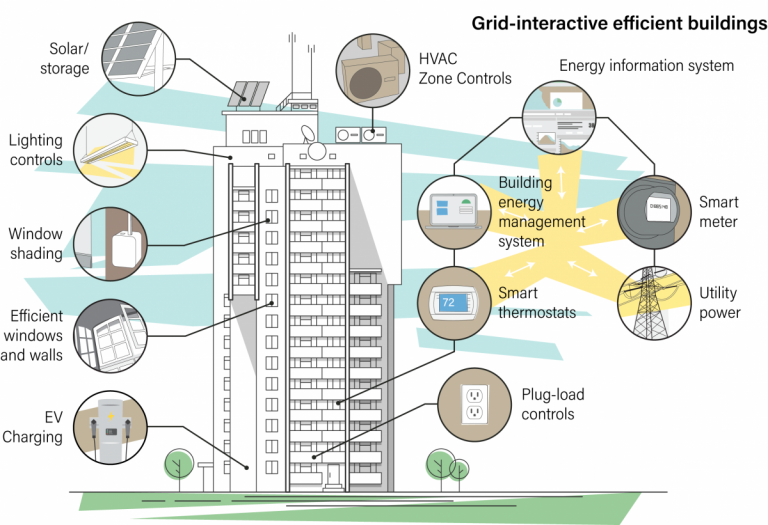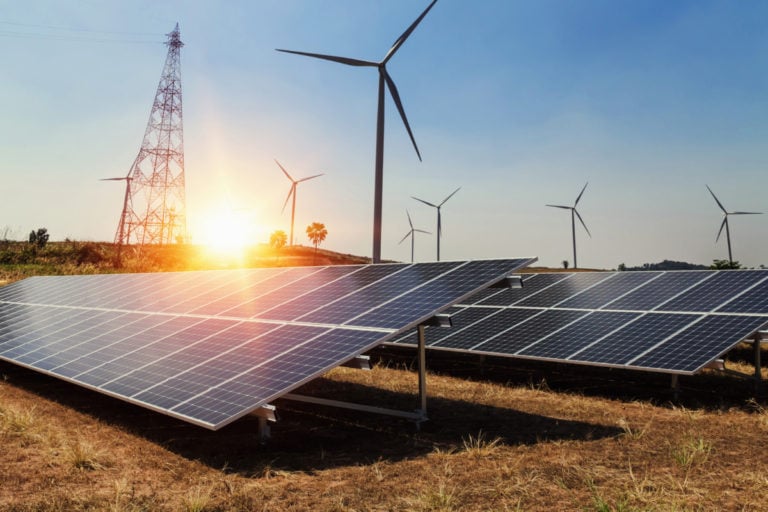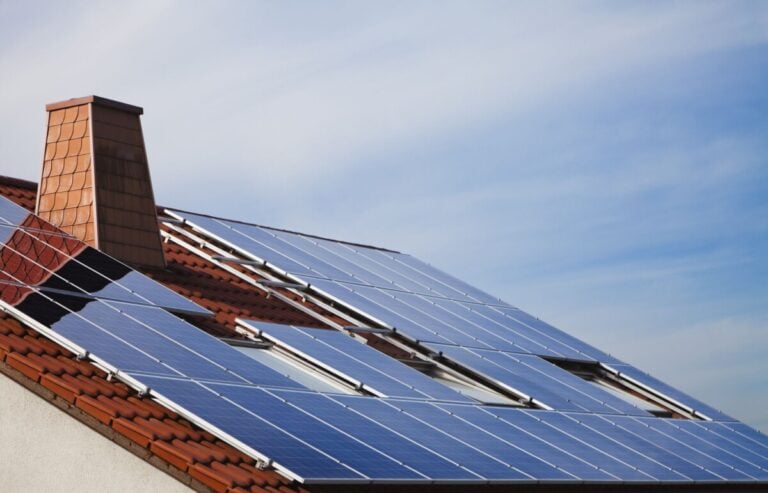Energy-saving technologies are understood as various production and household processes aimed at reducing the consumption of materials and energy resources per unit of output, or per unit of energy expended – thermal or electrical.
In principle, two ways of energy saving are possible – either to spend less non-renewable energy resources (gas, coal, oil) or to use them more efficiently.
Let’s consider the most large-scale sectors of economic activity, where the introduction of energy-saving technologies is especially important. These are industry, construction and households.
Practice of application of energy-saving technologies in production
The main losses are:
- Friction losses that arise during the operation of any mechanical energy conversion systems.
- Heat losses, in which excess resources are spent on unproductive heating of the environment.
- Electrical power losses accompanying the processes of transmitting significant power over long distances.
- Magnetic losses in devices designed to transform one type of energy into another.

At the same time, as the power of a single unit increases, the level of its losses also increases. Since traditional energy resources are more often used to operate metallurgical industries, increased energy consumption is often accompanied by a deterioration in the environmental situation.
In order to reduce specific energy consumption in metallurgy, the following is used:
- Expanded use of secondary raw materials and production waste;
- Optimization of management of metallurgical facilities using computer technology;
- Devices characterized by increased efficiency during their operation.
Resource-saving technologies are being introduced in similar ways in the chemical industry. And in metalworking, waste-free technologies are predominantly used: for example, plastic deformation processes are increasingly preferred to mechanical processing (which produces a significant amount of chips), and in a cold state, when the amount of waste is minimal.
Energy-saving technologies are developing especially intensively in industries with mass production. An example is the production of cars or engines. Modern energy-saving technologies accompany the entire chain of birth of a new vehicle – from its design, during the development of which factors of resistance to vehicle movement are fully taken into account, to assembly operations performed with the highest productivity and quality.
When producing energy-efficient engines, the engine load, minimum waste heat and exhaust gases, maximum efficiency are taken into account, and for internal combustion engines, the best chemical composition of the fuel is also taken into account.
New energy-saving technologies in construction
When designing and constructing residential and public buildings, the costs of unproductive losses should be fully taken into account.

Among them:
- Losses during space heating.
- Heat loss through the roof of buildings.
- Weakly controlled processes of heat exchange between the external surface of the building and the environment, especially during the cold season.
- Ineffective air conditioning.
The most promising energy-saving construction technology in Russia is the installation of condensation coating modules. These devices provide higher combustion efficiency – from 89% to 97% and are considered the most efficient method of heating and ventilation that uses gas fuel.
Condensing units are installed on roofs, also providing effective ventilation. These devices contain a secondary heat exchanger. Exhaust gases passing through this heat exchanger lower their temperature to the point at which water vapor condenses. This allows the devices to recover latent heat that would otherwise be lost to the exhaust air.
The design and installation of lighting systems for buildings, streets, and other facilities are characterized by a much larger scale of implementation of energy-saving technologies in construction. LED lamps have a clear advantage here: they have a luminous flux that is 85% higher than the value provided by incandescent lamps of the same power. Over the next few years, the power density of LEDs is expected to double, from the current 125-135 lumens per watt to 230 lumens per watt.
Even more promising from the point of view of modern energy-saving technologies is the use of induction lighting. Compared to incandescent lamps, induction lamps are approximately four times more efficient and last more than 40 times longer.
Main directions and programs of energy saving in the settlement
Resources and energy-saving technologies are especially relevant for private homes, when savings in material costs are ensured only through their rational use.

The main directions for introducing energy-saving technologies for a private home are:
- Effective insulation of walls and the use of materials with increased heat capacity in construction.
- Reducing energy costs when installing air conditioning systems.
- Use of heat pumps for individual water supply with increased efficiency.
- Use, where possible, power plants using renewable energy sources: wind, solar lighting, geothermal water, etc.
An example of rational use of resources and energy-saving technologies is the cooling process of coolant in air conditioning systems. Modern chillers are characterized by an increased volume of condensers and evaporators, and compressors allow you to vary the drive speed and control the power of air conditioners.
The role of energy efficiency processes and energy-saving technologies in household plumbing is great. In particular, dual-flush toilets and waterless gravity urinals can save up to 30% of water. Importantly, the dual flush mechanism is part of the flush valve and can be easily installed on existing plumbing fixtures.
Waterless urinals operate without a flushing mechanism. Instead of a traditional drain, a replaceable cartridge is used that contains a unique liquid that serves as a sealant. The sealing fluid acts as an airtight barrier, preventing indoor odors from being dampened. It remains in the cartridge, so the waterless urinal is cleaned approximately 3-4 times a year, which provides significant energy savings.
Plans for the widespread introduction of energy-saving technologies are drawn up taking into account their importance. Thus, up to 31% of losses of material and energy resources in developed countries occur in industry, 28% in logistics, 22% in the household sector, and 19% in construction.
Interesting facts about energy-saving technologies
- Denmark ranks first in the world in terms of the level of use of energy-saving technologies per capita. Thus, up to a third of all electricity in the country is generated by wind power plants.
- 35% of all energy consumption in global industry goes to ferrous and non-ferrous metallurgy.
- Oak Ridge and General Electric have created a new type of household refrigerator that uses special magnets to create cold. Such a refrigerator uses the magnetocaloric effect, according to which a decrease or increase in the temperature of the material is achieved by changing the magnetic field. Specific energy consumption is reduced by 37-40%.







